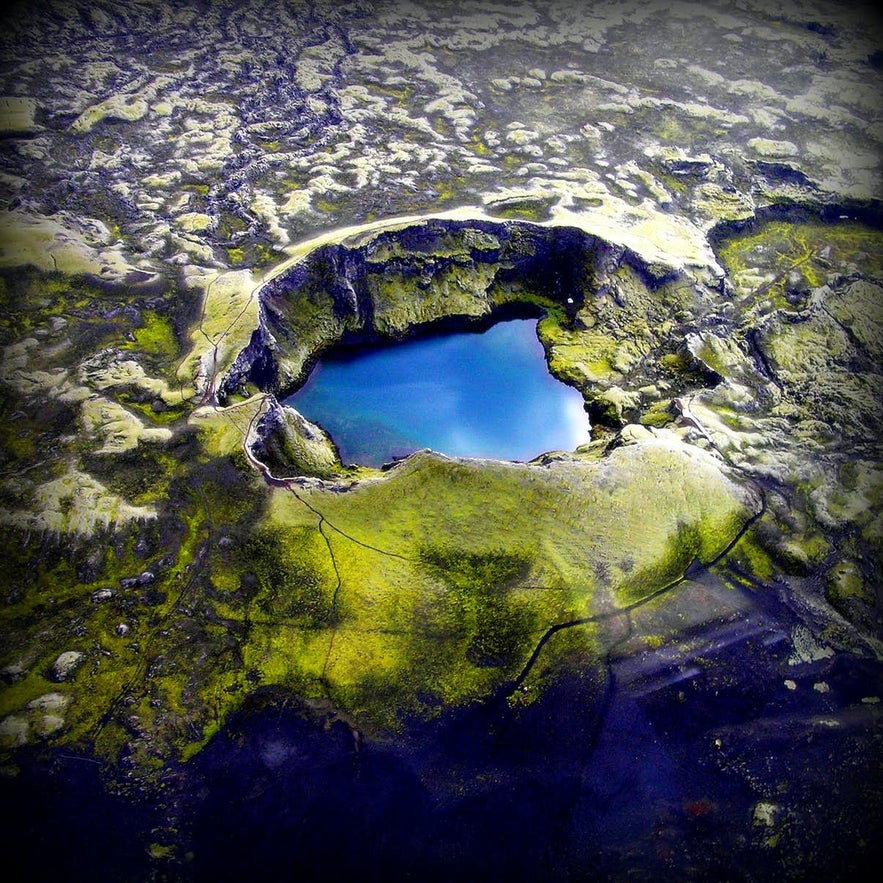
Lakagígar is a row of spectacular craters along twenty-five kilometers in the southern Icelandic Highlands, formed in the eruptions at Laki in 1783-1784.
Browse a wide range of tours of the Highlands of Iceland.
Waarom u onze inhoud kunt vertrouwen
Guide to Iceland is het meest vertrouwde reisplatform in IJsland en helpt ieder jaar miljoenen bezoekers. Al onze content wordt geschreven en gecontroleerd door lokale experts die IJsland door en door kennen. U kunt op ons rekenen voor nauwkeurig, actueel en betrouwbaar reisadvies.
Photo above from Sightseeing Flight Over Laki Craters, Glaciers and Highlands
These were one of the most significant and damaging eruptions in recorded history, known as 'the Fires of the River Skafta', or 'Skaftareldar' in Icelandic.
The majority of the craters are today covered in moss. The total area of the lava field they occupy is incredibly vast, and from certain vantage points in the area, you'll also be able to see the Highlands and South Coast.
Lakagigar can be accessed with a four-wheel drive vehicle in summer, and several super-jeep and hiking tours incorporate a visit to them. The craters run adjacent to the Edgjá canyon, the largest volcanic canyon in the world.
The Eruption That Formed Lakagígar
The eruption of Laki, which began in 1783, was not only one of the most consequential events in Icelandic history but had a massive impact globally.
The ash cloud it produced was so dense that it made ports too unsafe to access or leave, halting essential trade routes around Europe. Its effect on the climate ravaged agriculture, as did the poisons in the ash that entered the soil via rain.
Crops were destroyed and livestock depleted across the continent, with effects also being felt in Asia, North Africa and Asia; it caused a particularly devasting famine in Egypt. It is most known, however, for its impact in France. The effect on grain production there led to a shortage of bread and other essentials (leading to the legend of 'Let them eat cake'), which, alongside new ideas of liberty, equality and fraternity, stirred the population into revolt.
The French Revolution was one of the most significant events of the last millennium, propelling the ideals of liberalism above autocracy across much of the world. Though it had roots in many places, it is interesting that Laki was one of them.
When admiring Lakagigar, therefore, know that you are not just looking at a geological marvel but part of an incredible story entwined with human history.
While the eruption of Laki may seem to have a 'silver lining' because of its association with the revolution, have no illusions; its consequences were devasting at home. A third of Icelanders died, either from famine after livestock was all but wiped out or poison from the ash in their air and their food. A further third emigrated, mostly to Canada and North America.









